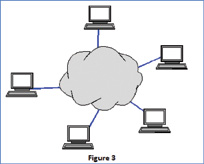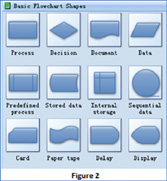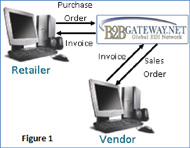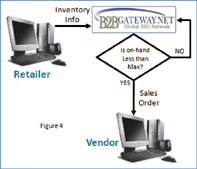|
|
|
E We probably all know that the supply chain is the interdependent process of receiving and sending documents and the associated goods. For example, if you are a supplier, you receive a purchase order; you turn it into a sales order in your system, which becomes a pick ticket, and the goods are picked and packed for shipping. Often times, an advanced shipping notification (ASN) is generated and sent to the buyer to let them know what to expect. Once the goods are shipped, an invoice is generated and sent to the buying organization. Several days/weeks/months later, the invoice is paid and you are in the money. Tightening of the supply chain can start with electronic data interchange or EDI. EDI is the process of handling the documents in the supply chain electronically rather than on paper. Ok, that may sound mystical and expensive, but it doesn’t have to be. Doing EDI is simply a matter of receiving a document electronically and converting it into the right format so that it can imported into your order processing system. Years ago, this was done by hiring a whole IT staff and investing in lots of computers and programs to convert the data. Nowadays, companies are available to pick up that data, convert it and send it to you over the internet in a format that can be imported into your system.
So, now you understand EDI and “the cloud,” but maybe you are still asking yourself, “How do I increase my sales?” The real increase in sales comes from using cloud-based EDI but ratcheting it up a notch to be known as Vendor Managed Inventory (VMI). With VMI, you as the vendor manage the inventory (so that’s how they came up with the name). What this means is that, instead of you receiving orders from a company that is buying from you, you receive inventory information. A company that is buying from your organization could easily buy from your competition, particularly if you sell commodity-type goods, unless you manage the inventory. When you approach an organization that is buying from you and say, “Hey, we will completely manage your inventory and we will ensure that your bins/shelves/racks are never empty,” that is VMI. The buying organization saves money on purchasing and is always ensured that the goods are in stock. You will be ensured that you will always make the sale because, in essence, you are placing the orders to yourself. Pretty cool yes, but how does it work?
So let us recap; you have tightened your supply chain by using EDI (in the cloud) and you have secured your sales channel by offering to manage the inventory of the buyer. You have increased your sales, and you have effectively ruled out the possibility of the buyer buying from the competition because the whole system will break down if they do. Now, human nature will probably take place; the buyer will say to you, “I’m giving you all my sales and I’m saving some money on purchasing. Yeah, my shelves are always filled, but they were when we were purchasing. What else is in this for me?” The proper response to this question is “We will give you better terms.” Many organizations that do VMI offer long terms. Yes it can be a bit painful, but since you are maintaining the inventory, you essentially own the stock until it sells. You can either set it up with, extended terms that are longer than you buyers cycle times or you can invoice for the goods as they are sold. |
| Above story first appeared in MADE TO MEASURE Magazine, Spring & Summer 2011 issue. All rights reserved. Photos appear by special permission. |
| UniformMarket, LLC 633 Skokie Rd., Suite 490 Northbrook, IL 60062 T: 224-406-8840 F: 224-406-8850 E: [email protected] |





 veryone talks about streamlining the supply chain process, tightening lead times and process flow automationbut most people have no idea what any of that means. To most, it sounds like a load of the latest buzz words with a really high price tag attached. Do you really need to be part of “the cloud” to make your business better? Do you need a staff of programmers to make your business thrive? Do you need a PhD in Computer Science to understand this stuff? Well, the answers to those questions are Maybe, No and No. My focus here will be to demystify some of the newer technologies and to show how you can really (and inexpensively) use them to your advantage.
veryone talks about streamlining the supply chain process, tightening lead times and process flow automationbut most people have no idea what any of that means. To most, it sounds like a load of the latest buzz words with a really high price tag attached. Do you really need to be part of “the cloud” to make your business better? Do you need a staff of programmers to make your business thrive? Do you need a PhD in Computer Science to understand this stuff? Well, the answers to those questions are Maybe, No and No. My focus here will be to demystify some of the newer technologies and to show how you can really (and inexpensively) use them to your advantage.

 This is a good time to explain “the cloud.” Back when I was in college, we had to draw computer program flow charts. The flow charts had weird symbols that you used to define parts of the process such as disk storage, decisions, cards, etc. (See Figure 2). As the years progressed and the internet became a huge part of our everyday lives, kids in college taking programming courses still had to draw flow charts but they needed a symbol to define the internet. As such they went with a cloud image like the one shown in Figure 3. So with all the mystery of “the cloud,” it is simply a different way of saying the internet. Companies that offer services over the internet have been called internet-based companies, application service providers, software as a service companies and now they are simply referred to as cloud-based computing. Cloud computing is anything that takes place on the internet, from using QuickBooks online to doing EDI with B2BGateway.net or even buying consumer goods on Amazon.
This is a good time to explain “the cloud.” Back when I was in college, we had to draw computer program flow charts. The flow charts had weird symbols that you used to define parts of the process such as disk storage, decisions, cards, etc. (See Figure 2). As the years progressed and the internet became a huge part of our everyday lives, kids in college taking programming courses still had to draw flow charts but they needed a symbol to define the internet. As such they went with a cloud image like the one shown in Figure 3. So with all the mystery of “the cloud,” it is simply a different way of saying the internet. Companies that offer services over the internet have been called internet-based companies, application service providers, software as a service companies and now they are simply referred to as cloud-based computing. Cloud computing is anything that takes place on the internet, from using QuickBooks online to doing EDI with B2BGateway.net or even buying consumer goods on Amazon. VMI is just like EDI, but instead of receiving purchase orders for goods, your cloud-based EDI service provider will receive inventory information. This inventory information can be in the form of on-hand information or it could be point of sale (POS) information. On-hand is the optimal information to receive, but on-hand can be computed by subtracting POS items sold from the starting inventory. Thresholds can be set up in the cloud-based EDI service provider’s system to define max level, min level, safety stock, lead time, optimal ship quantity, etc. The on-hand quantity is compared to the levels that are set, and if the quantities are below the threshold, an order is automatically generated. See Figure 4 for a clever and timely use of a flow chart decision symbol. From the end-user’s standpoint, you are reveiving an EDI purchase order in both scenarios. Although it is not shown in Figure 4, you would still be invoicing in the the normal EDI way.
VMI is just like EDI, but instead of receiving purchase orders for goods, your cloud-based EDI service provider will receive inventory information. This inventory information can be in the form of on-hand information or it could be point of sale (POS) information. On-hand is the optimal information to receive, but on-hand can be computed by subtracting POS items sold from the starting inventory. Thresholds can be set up in the cloud-based EDI service provider’s system to define max level, min level, safety stock, lead time, optimal ship quantity, etc. The on-hand quantity is compared to the levels that are set, and if the quantities are below the threshold, an order is automatically generated. See Figure 4 for a clever and timely use of a flow chart decision symbol. From the end-user’s standpoint, you are reveiving an EDI purchase order in both scenarios. Although it is not shown in Figure 4, you would still be invoicing in the the normal EDI way.







